The basic tenets of an effective Quality management System as defined generally are - People, Process and Technology. Though it becomes very difficult to give a weightage and say who is stronger than the other, a perspicuous argument would make it clear that ‘Process' is the pivot about which the entire wheel of Quality Management System spins around. Another simple aspect to support the process factor is the statement- ‘Even to plan and manage people and technology, there is a need for strong processes!!'.
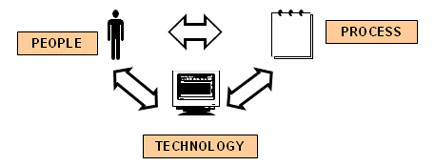
Organizations are recognizing the need for strong process architecture to manage their operations. Increasing acceptance of International models and practices like CMMI, ITIL, Six Sigma stands testimony to the fact., In such a scenario, it becomes imperative that organizations have a clear strategy when they put in place a process improvement program. In other words, the process for implementing a process improvement program also needs a proper structure. Using Quality Function Deployment (QFD) as a tool for initiating a process improvement program could come in handy.
What is Quality Function Deployment?
Quality Function Deployment (QFD) is a comprehensive methodology used to translate the customer requirements (Voice of Customer) to design (technical) characteristics and
build a quality product after benchmarking against the competition.
QFD helps to:
- Capture spoken and unspoken needs of customers
- Uncover qualities that could ‘wow' the customer
- Translate design characteristics to deliverable actions
Interpreting the terminologies, the Organization and employees are the main customers and complete process system becomes the product in contention to be designed. The process group and Senior Management own the responsibility for building a high quality
product, which is tantamount to defining an effective quality management system in the scenario defined here.
How to use QFD for Process Improvement Program?
Step 1: Identify the Voice of Customer (VOC)
- Identify the "What's" for Process Improvement.
- What is it that, as an organization, we look for in a Process improvement program?
- What are the main things that a Process Improvement initiative should address?
These are generally the questions that populate the ‘VOC' section of the QFD Matrix
Step 2: Define your Process Elements based on Voice of Customer
This section of the Matrix is primarily used to translate the Voice of Customer to technical terms of process vocabulary. This defines the "How's" of Process Improvement.
Step 3: Relationship between WHATs and HOWs
This section of Matrix is used to determine the relationship between What's and How's. The relationship of different parameters could be Strong, Medium or Weak when graded in a 10 point scale.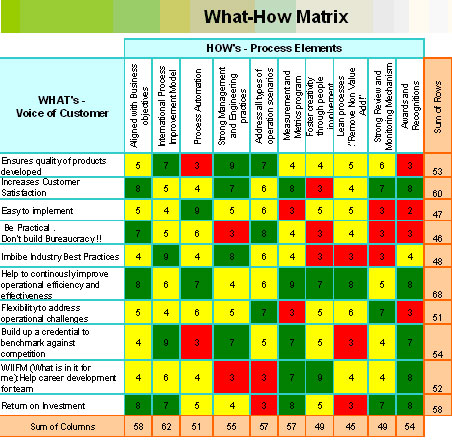
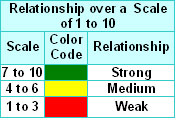
The radar charts based on the WHAT-HOW Matrix gives us the total picture of the needs and means.
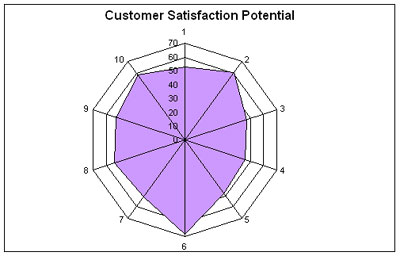
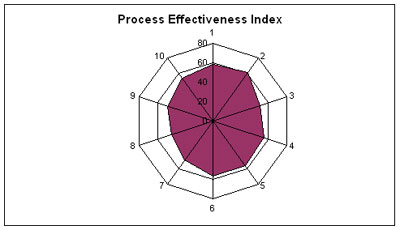
Step 4: Customer benchmarking
The next step is intended to benchmark the WHAT's, by way of customer's rating. This however is slightly difficult, in this case as Customers are primarily organization employees, to source data on how employees look at their own organization processes is a bit challenging.
Industry surveys and Company Best practices, Case studies published acts as main source of information apart from direct interaction with Competition's counterparts. The other aspect is that Customers are not the same ones who have used different organization processes. Employees who have had experience with multiple organization processes form a core contribution group for this benchmarking study. This benchmarking helps to ensure initiatives taken by the organization are in line with the industry shifts and patterns.
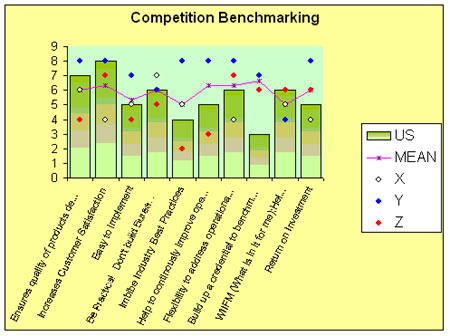
Step 5: Solution benchmarking
The next step is to benchmark the HOW's of the Matrix against the competition. This information is a bit easier to source because organizations generally share this with the
community in forums, seminars and journals.
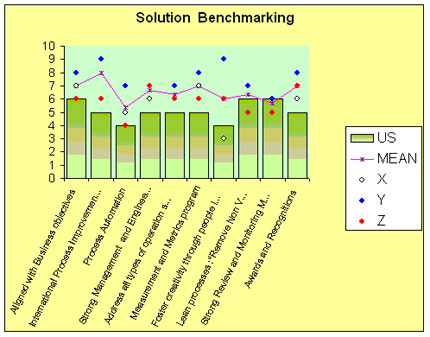
Step 6: Trade off between different HOW's
There is a always a scenario where all the technical characteristics cannot be fulfilled, for
example if low cost is a need then there is a trade off from superior quality material to acceptable quality material.
Similarly in process improvement programs it calls for a trade off between HOW's especially in areas of Process automation and the Operational flexibility front.
Step 7: Set up Integrated Matrix
This presents the complete consolidation of steps 1-4.
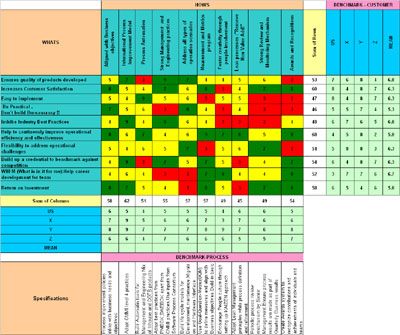
Step 8: Define Specifications
The final activity which completes the QFD Matrix is defining the specifications for various HOW's identified based on our WHAT-HOW relationship, Results of Customer, Solution
benchmarking and trade offs obtained between different HOW's.
This acts as the end deliverable and provides the guiding principles for setting up a Process Improvement program.
A sample Specifications sheet could be one as referred below:
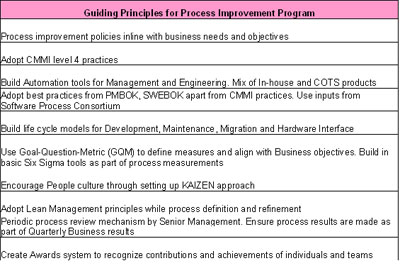
This helps organizations to decide which is the best model or practice that needs to be adopted.
Thus Quality Function Deployment (QFD) could act as an effective tool for organization to design and implement a process improvement program.

